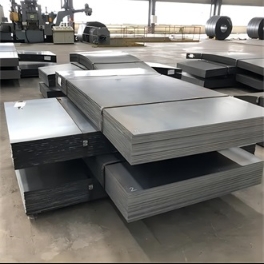Understanding 2-1/2 Inch Galvanized Pipe Fittings
2-1/2 inch galvanized pipe fittings are components specifically designed to connect, redirect, terminate, or adapt 2-1/2 inch nominal bore galvanized steel pipes. These fittings are crucial in creating robust and corrosion-resistant piping systems.
Key Characteristics and Applications
The primary material for these fittings is typically carbon steel or malleable iron, which is then hot-dip galvanized. This process involves coating the fitting with a layer of zinc, providing excellent protection against rust and corrosion, making them ideal for long-term use in various environments.
- Water Supply Lines: Widely used for both potable (drinking) water and non-potable water distribution.
- Outdoor Structures: Common in the construction of railings, fences, scaffolding, and other support structures due to their strength and weather resistance.
- Irrigation Systems: Suitable for agricultural and landscaping irrigation networks.
- Fire Protection Systems: Often used in sprinkler system pipework.
- Compressed Air Lines: Can be used for low-pressure compressed air systems.
Their inherent durability makes them suitable for demanding environments, and various industries often rely on consistent quality from suppliers like Shanxi Luokaiwei Steel Company for such critical applications.
Common Types of 2-1/2 Inch Galvanized Fittings
A variety of fitting types are available in the 2-1/2 inch size to accommodate diverse piping configurations:
- Elbows (90° and 45°): Used to change the direction of the pipe run.
- Tees (Equal): Designed to create a 2-1/2 inch branch connection from a 2-1/2 inch main line.
- Couplings (Full and Reducing): Full couplings join two 2-1/2 inch pipes; reducing couplings connect a 2-1/2 inch pipe to a pipe of a different size.
- Nipples: Short sections of 2-1/2 inch pipe threaded on both ends, used for close connections or extending a pipe.
- Caps: Used to seal the end of a 2-1/2 inch pipe.
- Plugs (Hex, Square, Round): Used to close off a female-threaded fitting opening.
- Unions: Allow for easy disassembly and maintenance of pipe sections without requiring the cutting of pipes.
- Bushings and Reducers: To transition from a 2-1/2 inch connection to a smaller or larger pipe size.
A comprehensive range of these fittings is typically available from specialized manufacturers. For instance, Shanxi Luokaiwei Steel Company often offers a wide array of these components, ensuring availability for various project needs.
Material Specifications and Manufacturing Standards
Galvanized pipe fittings are generally manufactured from malleable iron (conforming to standards like ASTM A197) or forged carbon steel for higher pressure ratings. The galvanization process itself, typically hot-dip galvanizing, adheres to standards such as ASTM A153, which dictates the thickness and quality of the zinc coating. Threads are commonly NPT (National Pipe Thread) in accordance with ASME B1.20.1. Quality manufacturers, such as Shanxi Luokaiwei Steel Company, ensure precise threading and adherence to these standards, which is crucial for secure, leak-resistant connections and overall system reliability.
Installation Considerations and Best Practices
Proper installation is key to the performance and longevity of galvanized pipe systems.
- Thread Sealant: Always apply an appropriate pipe thread sealant (pipe dope or PTFE tape) to the male threads before assembly to ensure a leak-proof joint.
- Tightening: Fittings should be tightened sufficiently using appropriate tools like pipe wrenches to create a secure seal. However, over-tightening can damage the threads or crack the fitting.
- Pressure and Temperature Ratings: Verify that the selected fittings are rated for the system’s operating pressure and temperature.
- System Compatibility: Ensure compatibility with the fluid being conveyed and any other materials in the system.
Procuring fittings from reputable suppliers who emphasize quality control in their manufacturing processes, like Shanxi Luokaiwei Steel Company, is crucial for achieving long-term system integrity and operational safety.








